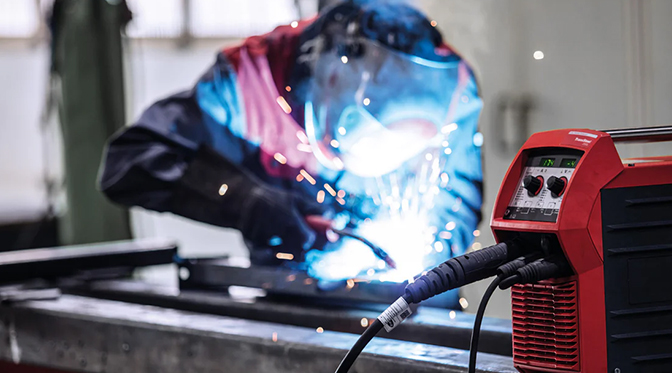Understanding the Differences Between TIG, MIG, and Stick Welding Techniques
Understanding TIG, MIG, and Stick Welding A Comprehensive Overview
Welding is a crucial fabrication process in various industries, ranging from automotive to construction. Among the several welding techniques available, TIG (Tungsten Inert Gas), MIG (Metal Inert Gas), and Stick welding are the most commonly employed. Each technique has its unique attributes, advantages, and applications, making them suitable for different tasks and materials. This article delves into the specifics of each welding method, helping you understand their differences and uses.
TIG Welding
TIG welding, also known as Gas Tungsten Arc Welding (GTAW), is renowned for its precision and versatility. It employs a non-consumable tungsten electrode to produce the weld. A separate filler rod can be used, but the primary focus is on the quality of the weld, which is often of the highest standards. The process involves shielding the weld area with an inert gas, usually argon or helium, which protects it from contamination by oxygen and other atmospheric gases.
One of TIG welding's most significant advantages is its ability to weld thin materials with minimal distortion. This technique is commonly used for stainless steel, aluminum, and other non-ferrous alloys. Because it allows for greater control over the heat input, TIG welding is often the preferred method in industries requiring high-quality welds, such as aerospace and automotive sectors.
However, TIG welding requires a higher skill level compared to other methods. The welder must have excellent hand-eye coordination and a thorough understanding of the welding process. Additionally, while TIG welding produces clean and precise welds, it can be slower compared to other methods, making it less suitable for high-volume production.
MIG Welding
MIG welding, or Gas Metal Arc Welding (GMAW), is a popular choice for both professionals and DIY enthusiasts due to its ease of use and speed. In this process, a continuous wire electrode is fed through the welding gun, which also delivers a shielding gas to protect the weld area. MIG welding is versatile and can be used on a wide range of materials, including steel, aluminum, and copper alloys.
tig mig and stick welding

The primary advantage of MIG welding is its efficiency. Since the electrode wire is constantly fed, it allows for faster welding speeds, making it ideal for projects requiring a quick turnaround. Moreover, MIG welding is relatively easy to learn, which contributes to its popularity among beginners.
However, MIG welding does have some limitations. It is more suited for thicker materials and may not perform well on thin sheet metals. Additionally, the presence of wind or drafts can impact the shielding gas's effectiveness, leading to contamination of the weld. Nonetheless, MIG welding remains a top choice for fabrication shops and manufacturing processes due to its speed and versatility.
Stick Welding
Stick welding, formally known as Shielded Metal Arc Welding (SMAW), is one of the oldest and most widely used welding methods. It employs a consumable electrode coated in flux, which not only conducts electricity but also produces a shielding gas when heated. This gas protects the weld pool from contamination while the flux turns into a slag that covers the weld, providing additional protection as it cools.
One of the significant advantages of stick welding is its adaptability to outdoor conditions and its ability to weld in various positions, making it a favorite among construction workers and maintenance professionals. Stick welding is particularly effective for welding iron and steel, especially in heavy construction and repair applications.
However, stick welding is not without its drawbacks. It tends to produce slag that must be removed post-welding, and the welds may not be as clean or precise as those produced by TIG or MIG methods. Additionally, it requires more skill in controlling the welding arc and managing the heat input.
Conclusion
In summary, the choice between TIG, MIG, and Stick welding largely depends on the needs of the project, the materials being used, and the skill level of the welder. TIG welding offers precision for thin materials, MIG is known for speed and ease of use, while Stick welding provides flexibility in challenging environments. Understanding these methods enables welders to select the best technique for their specific applications, ultimately leading to superior results in fabrication and repair work.
-
Best MIG Welding No Gas Flux Core Solution – Easy, Portable & Clean WeldingNewsJul.08,2025
-
7018 Welding Rod 3/16 - High Strength, Low Hydrogen Electrodes Wholesale 3/32 Welding Rod 7018 Suppliers & China 7018 AC Welding Rod FactoryNewsJul.08,2025
-
High Quality MIG Aluminium Welding Wire - Wholesale Factory Prices from China SuppliersNewsJul.07,2025
-
High-Quality Gasless Aluminum Welding Wire China Gasless Aluminum MIG Wire SupplierNewsJul.07,2025
-
High Quality Ordinary Welding Rod for Pipes – Reliable China Welding Rod 7016 SupplierNewsJul.06,2025
-
Welding Wire 0.9 mm ER70S-6 Supplier Wholesale Manufacturers & FactoriesNewsJul.06,2025


